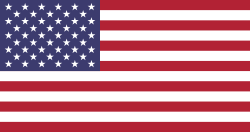In Estonia, drone flying is regulated by the European Union drone regulation, which has been in force since 2021. FPV (First Person View) flying is allowed, but it comes with specific requirements. This section provides an overview of the legal obligations for FPV drone pilots in Estonia.
FPV Flying Rules
FPV flying means the pilot does not have direct visual contact with the drone. Therefore, a visual observer is mandatory — someone who maintains line-of-sight with the drone and can warn the pilot of any danger.
FPV flights are only allowed after the pilot has learned to fly with visual line-of-sight.
Registration Requirements
If your drone weighs more than 250 g or has a camera, you must register as a UAS operator on drooniluba.ee.
After registration, you will receive a unique operator ID, which must be clearly marked on all your drones.
Registration is free and must be renewed annually.
Pilot Competency
To fly in the Open Category A1/A3, you must complete online training and pass a theory test on drooniluba.ee.
The test includes 40 multiple-choice questions and can be repeated if needed.
You do not need to take the test if your drone is under 250 g and does not exceed 19 m/s in speed.
Where You Can Fly
You may fly in open areas away from people, buildings, and airports.
Flying over crowds or in densely populated areas is not allowed without special permission.
FPV races or events with spectators fall under the specific category and require special approval from the Transport Administration.
Rules
Here we will talk about FPV itself and a little more about the drone type class and subcategories of the open category.
FPV Operation
FPV flying is allowed in Estonia, but only if you have a visual observer next to you who maintains direct line-of-sight with the drone at all times.
The observer must be close enough to communicate with the pilot immediately and warn of any dangers.
Even during FPV operation, the remote pilot is fully responsible for the safety of the flight.
The observer must be able to see the drone at all times.
This was already considered good practice before the current legislation.
Privately Built vs. Certified Drones
If you build your drone yourself or assemble it from parts, it is considered a privately built drone.
Privately built drones are divided into two groups:
- Up to 250g and 19 m/s
- Up to 25 kg
If you buy a ready-made drone, it must have a C0–C4 class label and a manual.
If you modify a certified drone (e.g. change motors or battery), it becomes a privately built drone.
Age Restrictions
There is no age limit for flying drones under 250g and 19 m/s or C0 class.
In all other cases, the minimum age is 16.
Pilots under 16 may fly only under supervision by a trained adult.
Open Category Subcategories
The Open Category is divided into three subcategories: A1, A2, A3.
All flights must stay below 120 meters above ground.
Flying near airports, national parks, or restricted zones is prohibited.
You must always fly within visual line-of-sight (either by pilot or observer).
Flying under the influence of alcohol or drugs is strictly forbidden.
Subcategory A1
- Allowed for drones under 250g or C0 class
- No flying over crowds
- Flying over uninvolved persons should be avoided
- Suitable for most FPV micro drones
Subcategory A2
- Requires additional theoretical exam
- Minimum distance of 30 meters from uninvolved persons
- Not typically used for FPV racing drones
Subcategory A3
- No flying in urban or populated areas
- Must stay 150 meters away from buildings and people
- Suitable for flying in open fields or remote areas
Quick Summary for FPV Pilots
- ✅ Register as an operator
- ✅ Mark your drones
- ✅ Complete online training (unless exempt)
- ✅ Know your drone’s class (C0/C4 or privately built)
- ✅ Fly in A1 (under 250g) or A3 (larger drones)
- ✅ Always use a spotter for FPV
- ✅ Stay safe and follow the rules


